A delicious bowl of pasta, using authentic noodles, will always have its’ place. However, why choose traditional pasta noodles when there are now many pasta alternatives that are higher in protein and fiber, some with a similar taste and texture? This is the ultimate guide to choosing pasta alternatives so you can determine which one is right for you!
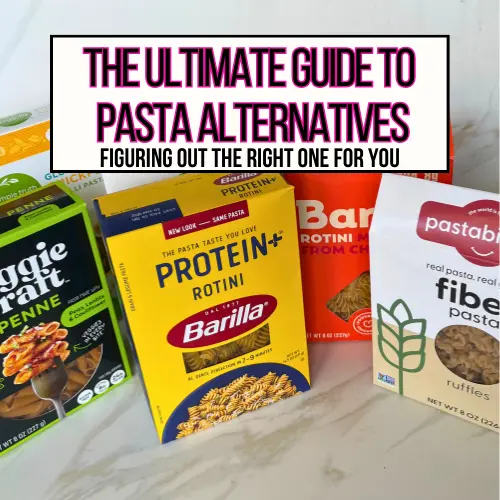
One of my friends told me she picks red lentil noodles because they’re “guilt-free”. It really got me thinking about all the options available at grocery stores and what may be the perception of them.
This post will compare the different types of pasta based on nutritional information, texture and taste (from myself and from others). From lentil to chickpea to edamame noodles- what are the differences?
You see, even though there are some super healthy and nutritious pasta options out there: you will see that almost all of them have 190 calories per 2 ounce serving. We should never feel guilty for consuming a bowl of pasta, however, I am not sure “guilt-free” is the best term to use.
A brief overview of pasta alternatives:
Comparing Pasta Alternatives
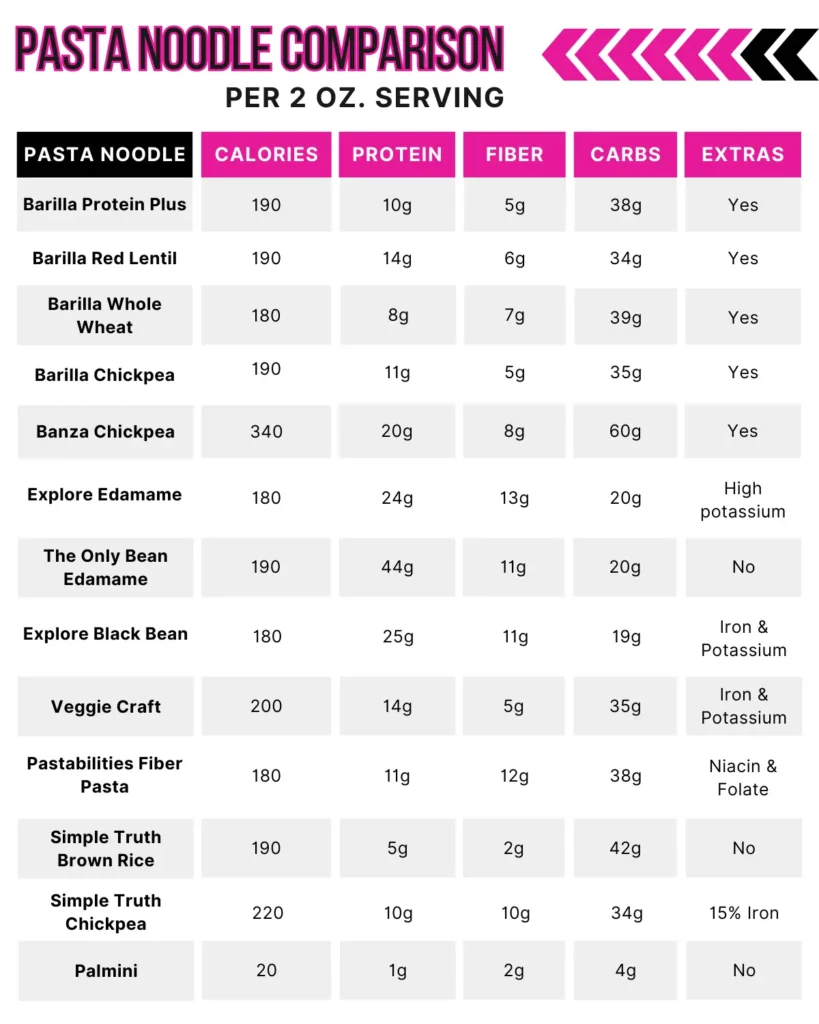
To keep it consistent, I (mostly) compared the rotini pasta. “Extras” means it has additional vitamins and minerals.
I am 75% Italian, so pasta is a staple at almost every family function. Therefore, I can be pretty picky about pasta. Now, I am a Barilla Protein Plus fan but even I was excited to see what other options are available – and if I preferred another. Let’s discuss!
Best All Around: Barilla Protein Plus
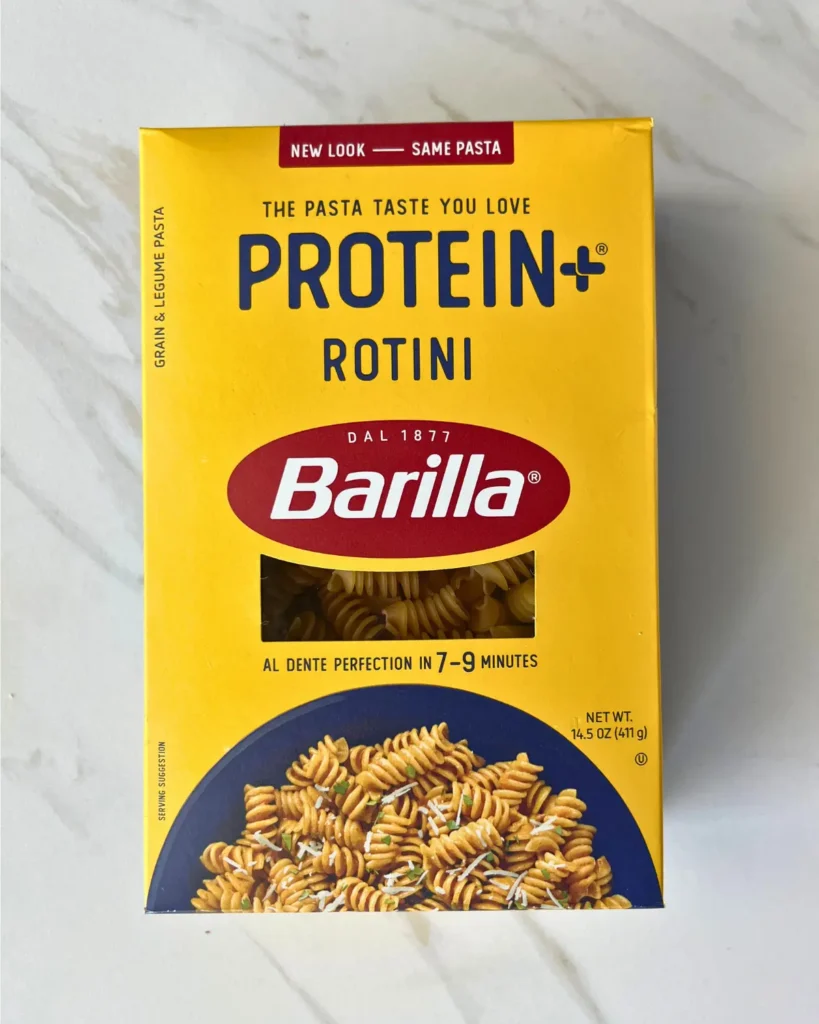
Barilla Protein Plus earns the prize for best all-around pasta alternative due to the good combination of protein and fiber, as well as the texture and taste. It has around the same cooking time as traditional pasta -and I can barely tell the difference. Quite frankly, I use it all the time to replace regular pasta.
This is a great option if you’re super picky about the texture of your pasta but want some additional protein and fiber. Barilla also does a great job of fortifying pasta with numerous vitamins and minerals! Use these noodles with your picky kids so they get some extra nutrients!
Nutritional Information per 2 oz. serving:
Best Wheat Alternative: Barilla Protein Plus Red Lentil Pasta

I have to hand it to Barilla for creating pasta alternatives that are so similar to traditional pasta in taste and texture. Not only could this also be a “best all around” option, but is an excellent gluten-free option as the pasta is made out of red lentil flour.
Reviews of this pasta are mostly positive. It’s best to consume with a flavorful sauce or in soups, and the texture is bit firmer than regular pasta (which I actually love).
Nutritional Information per 2 oz. Serving:
Best High Fiber Pasta: Pastabilities Fiber Pasta
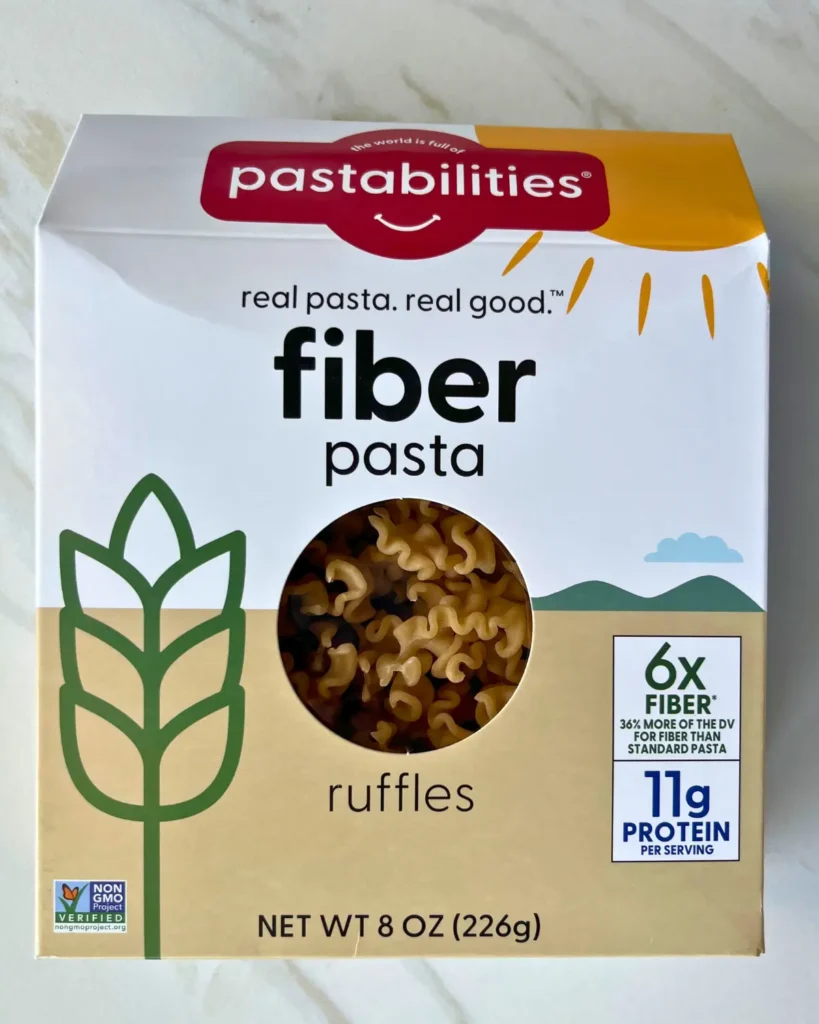
Ok, so this one almost made best all around because it is much higher in fiber than Barilla Protein Plus, and has more protein as well! Not only that, I was shocked with the texture – perfectly al dente. No mush.
If you’re trying to increase both protein and fiber consumption, this is definitely a great option! The taste wasn’t quite as good as Barilla Protein Plus but with the right sauce I think it would be very tasty. It doesn’t hold the texture as well either.
Nutritional Information per 2 oz. Serving:
Runner Up: Explore Edamame Pasta
Unfortunately, I didn’t get to try this one as it wasn’t at my local grocery store. I wish I could have because with 24 grams of protein and 13g of fiber – this might be a winner. It is also a little lower in carbs compared to other pasta alternatives.
Made with only organic edamame bean flour so it is an excellent gluten-free option! Even further, I was surprised that the reviews are generally positive. Some complain that the noodles stick together. I would advice caution, though, that reviews like “doesn’t taste too bad” might mean this is a good option if you’re not picky.
Nutritional Information per 2 oz. Serving:
Highest Protein Pasta: The Only Bean Edamame Pasta
Another edamame pasta option with a tad more protein per serving. The reviews are quite mixed: some people love them, while others complain they’re super chewy. Most reviewers note this product does not have a similar consistency to traditional pasta at all.
Nutrition per 2 oz. Serving:
Tastiest Gluten-Free Pasta: Simple Truth Brown Rice Fusilli
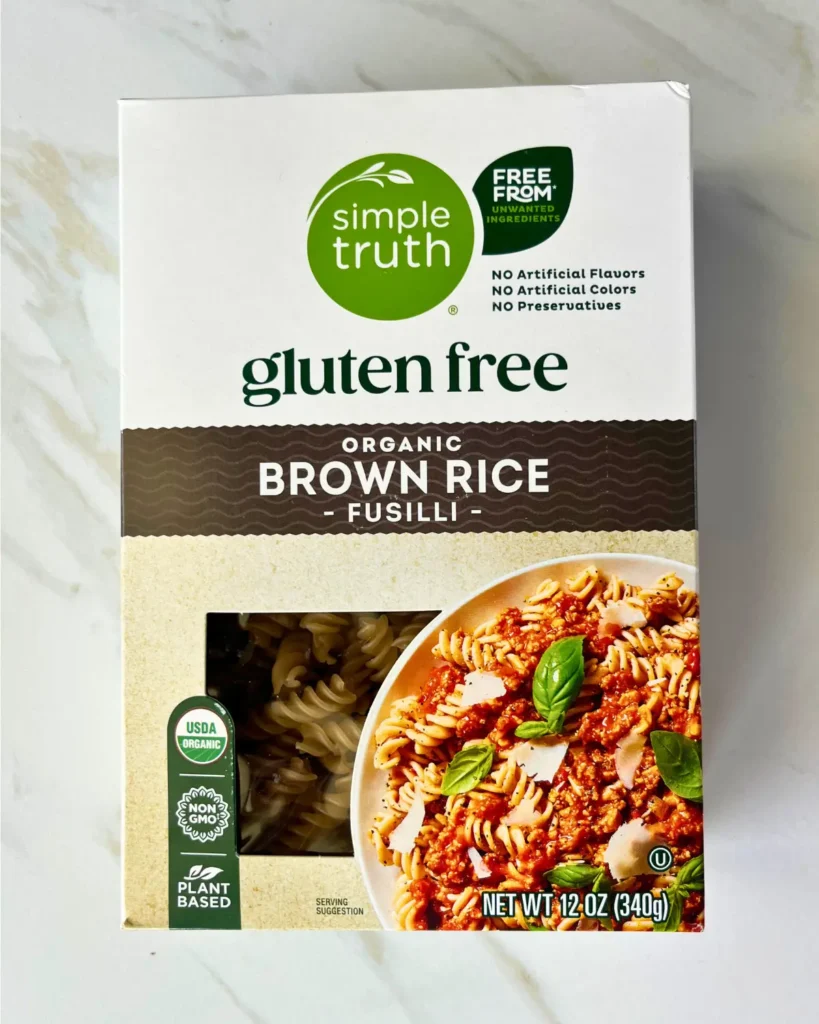
I really enjoyed the taste and texture of Simple Truth Brown Rice Fusilli. However, in terms of nutritional content: there are definitely better options.
Nutritional Information per 2 oz. Serving:
Low Calorie and Low Carb Pasta for Weight Loss: Palmini or Tofu Shirataki Noodles
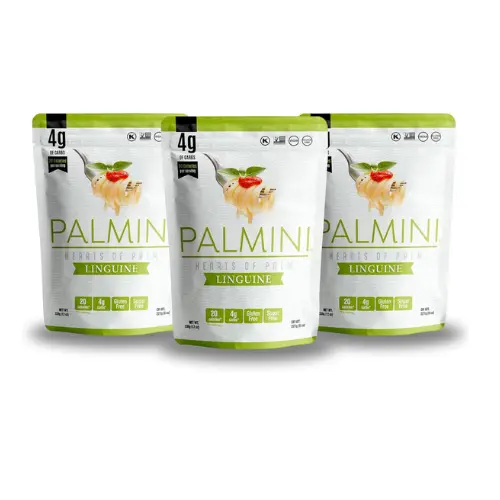
These are some of the only products on the market that are low calorie and low carb. Ideal for high volume, low calorie meals – when you just want a huge bowl of pasta without all the calories. This would be the only option I would maybe say is “guilt-free” (though none of these options should ever make you feel guilty!).
Palmini noodles are made from hearts of palm. For being made out of a vegetable, these noodles offer very little nutritional value. Surprisingly, many people love the taste of these noodles and are ideal for those following a keto diet.
Tofu shirataki noodles are not as well-received, with a similar nutritional profile.
Palmini Nutritional Information per Serving:
Not My Favorite: Banza Chickpea Pasta

Banza is by far one of the most popular pasta alternatives. Made out of chickpeas, it’s high in protein and fiber. I know many people love the taste and texture – but I just cannot get behind it.
While I love that it’s so high in protein, the texture is just not ideal. While being cooked, it can very easily boil over or turn mushy and fall apart. With so many other great alternatives, though, it’s just an honorable mention for me.
Nutritional Information Per 2 oz. Serving:
I also really did not like Veggie Craft pasta OR Simple Truth Chickpea pasta! They became very mushy, very quickly. The texture is just not even worth it, in my opinion!
Related Posts:
— High Protein Buffalo Chicken Crockpot Pasta
— High Protein, High Fiber Meal Plan
— Best Cereals for a Quick and Healthy Breakfast
Which One Is Your FAVORITE?
Contrary to what James Kennedy thinks, sometimes, it IS about the pasta. Especially when there are so many options that offer more than just “refined carbs” these days.
As always, make sure to read nutrition labels and understand what to look for. Even these healthier pasta alternatives can add up when consuming a larger portion size.
I am curious if you already have a favorite pasta or pasta alternative that you prefer – what is it? Hopefully, this post will get you inspired to try some different options and figure out your favorite!

Thank you for this post! It is super helpful. I LOVE the chart! I am eager to try the protein plus, Palmini and the edamame! And I agree, it IS about the pasta! Lol